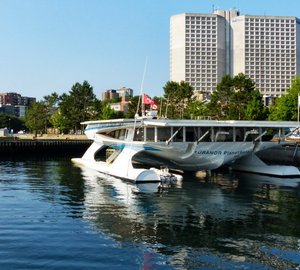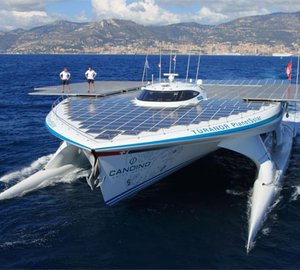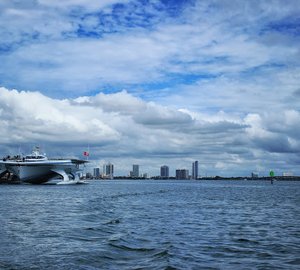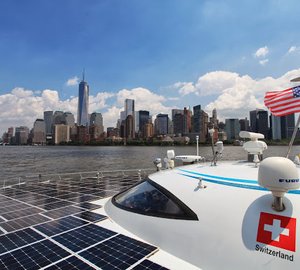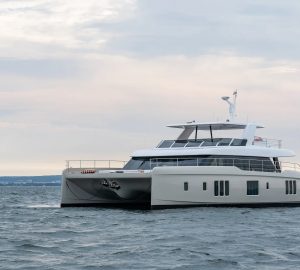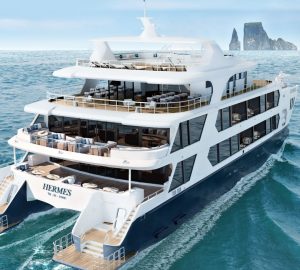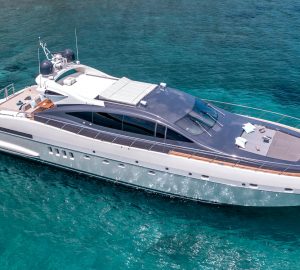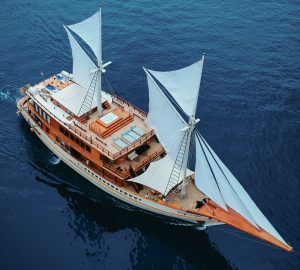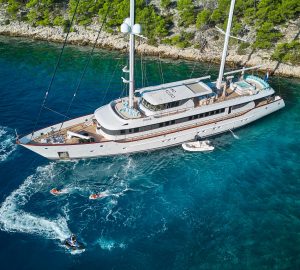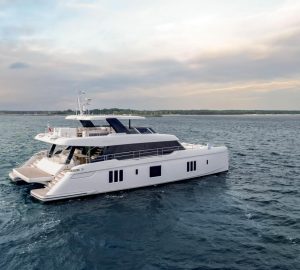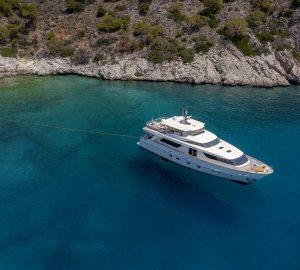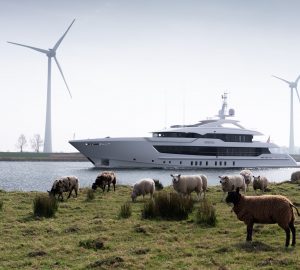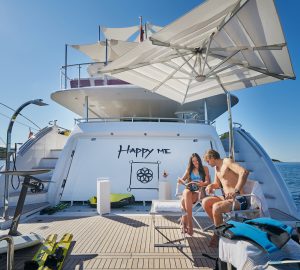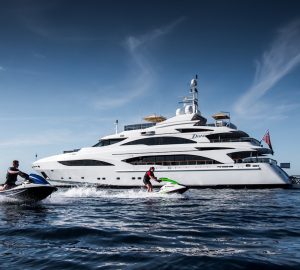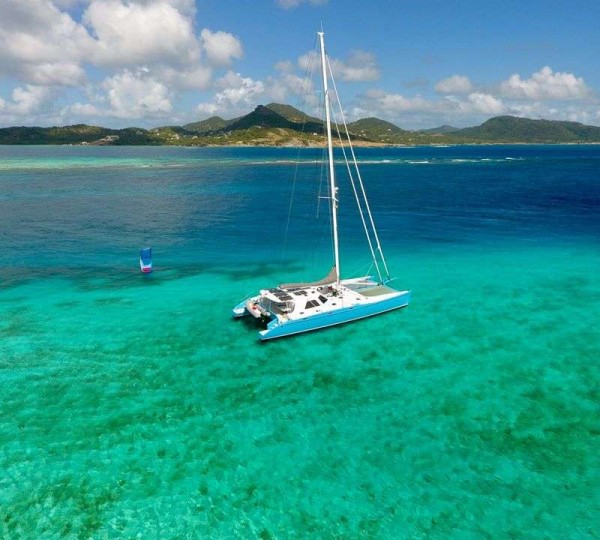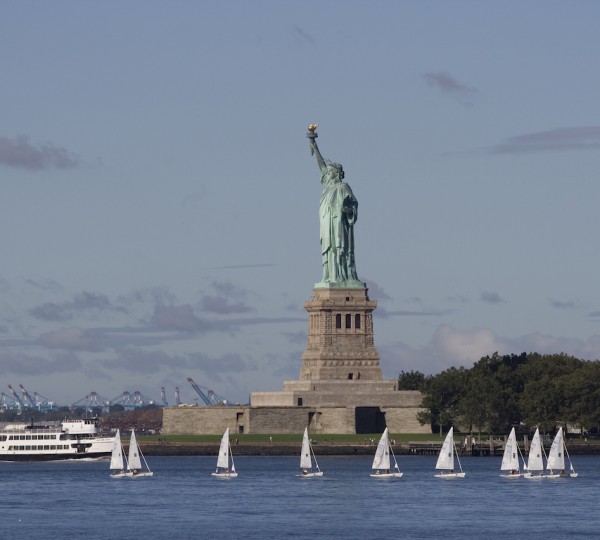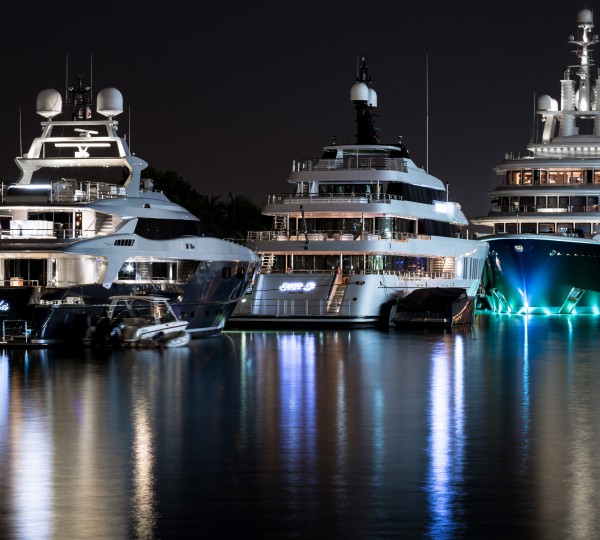The MS Tûranor PlanetSolar, the world’s largest solar boat, continues her U.S. tour, and arrived in the New York City yesterday, on June 17, 2013. As part of the “PlanetSolar DeepWater” scientific expedition performed by the University of Geneva, the MS Tûranor PlanetSolar, being transformed into a scientific platform, is allowing a team of researchers to take advantage of her exclusive features, in order to conduct a campaign of physical as well as biological measurements along the Gulf Stream.
The navigation between the states of Florida and New York constitutes the initial phase of this unprecedented data collection on the Gulf Stream, an important regulator of European and North American climates. With the support of the Swiss Consulate General in New York, the solar vessel and her crew, consisting of both sailors and scientists, moored in the North Cove Marina in southern Manhattan around 12.00 noon (local time).
After being forced to remain in Miami for a few days to avoid “Andrea”, the first tropical storm of the season in the Atlantic, the solar catamaran left the coast of Florida on June 8 to begin the scientific expedition studying the Gulf Stream. “Now we are in the thick of the scientific expedition. We have been travelling along the Gulf Stream since we left Miami, so we were already able to take the first measurements. A strong and favorable current enabled us to sail at over 8 knots at times!” explains Gérard d’Aboville, captain of the boat. However, another disturbance forced the ship to move away from the current during the second part of the trip. “A violent depression passed through the northeastern United States. We had to find shelter in Chesapeake Bay to let it pass. To avoid losing time, we traveled up the bay and passed through a canal into Delaware,” said the captain.
The MS Tûranor PlanetSolar has therefore launched the practical stage of her second life, and her arrival in the New York metropolis marks the passage of the first phase of this novel research campaign on one of the most important regulators of European and North American climates. Shortly after the ship’s arrival, Ambassador François Barras, Swiss Consul General in New York, enthusiastically declared, “Switzerland is proud to welcome PlanetSolar to New York. She is a great platform for promoting the spirit of Swiss innovation. The University of Geneva’s DeepWater scientific expedition demonstrates the high quality of research in Switzerland, and the boat raises public awareness about the use of renewable energies. All in all, PlanetSolar is an ideal ambassador!”
Headed by Professor Beniston, climatologist and director of the Institute of Environmental Sciences at the University of Geneva (UNIGE), the onboard research team began taking measurements with advanced instruments in order to study the key parameters of climate regulation, namely aerosols and phytoplankton. This unique campaign requires researchers to “navigate along the Gulf Stream and collect scientific data in the water and in the air in order to improve our understanding of the complex interactions between the ocean and the atmosphere, as well as the role these interactions play in climate change,” says Professor Beniston. In parallel, a pedagogical team has developed educational activities and resources designed to make young people aware of climate change and its impact.
The interdisciplinary team of scientists from the University of Geneva will sail along the Gulf Stream, passing through Boston, St. John’s (Canada), and Reykjavik (Iceland), and will disembark in Bergen (Norway) in August. The study of this ocean current will take the ship to the northernmost point of the Atlantic for the first time. The MS Tûranor PlanetSolar’s exclusive features are a major asset for the researchers: given the absence of polluting emissions, the atmospheric measurements won’t be distorted by residues associated with fuel combustion.
The MS Tûranor PlanetSolar and her crew will remain moored in the heart of the Big Apple from June 17—20. With the support of the Swiss Consulate in New York, events dedicated to the public and local authorities will be organized onboard.
High-tech instruments aboard the largest solar boat in the world
In order to collect a continuous series of physical and biological measurements in the water and in the air, the ship is equipped with 6 advanced instruments, including the “Biobox”, an instrument that was specifically developed by the Applied Physics Group at the University of Geneva for the study of aerosols at the interface between the atmosphere and the ocean. It is the only instrument to date capable of determining instantaneously the identity of aerosols using laser technology. It will be used aboard the MS Tûranor PlanetSolar for the first time.

